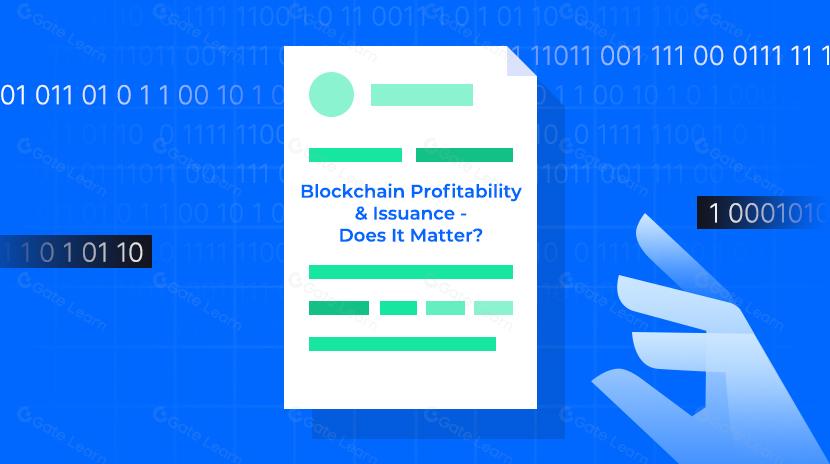什麼是挖礦(Mining)與質押(Staking)
隨著比特幣(BTC)於2024年完成最新一次減半後,加密貨幣市場再次站在轉折點上。這次減半不僅讓礦工面臨更嚴峻的生存挑戰,也使市場重新思考BTC的長期發展潛力。同時,以太坊(ETH)成功轉型為權益證明(Proof of Stake, PoS)機制並取得質押(Staking)的顯著成功,讓市場開始探討:未來BTC走勢會更受到挖礦(Mining)還是質押機制(Staking)的影響?本文將深入探討質押與挖礦兩種機制各自在BTC未來價格波動中的角色與影響力,協助投資者更準確地掌握趨勢變化。挖礦(Mining)與工作量證明(PoW)
比特幣的安全與運行仰賴工作量證明(Proof of Work, PoW)共識機制,由全球礦工透過競爭計算哈希值來爭取記帳權,每成功挖出一個區塊即可獲得區塊獎勵。這套挖礦機制確保了網絡的去中心化與安全性,任何人只要有足夠的算力即可成為礦工,無需經過中央機構許可。
約每4年一次的減半事件,將區塊獎勵減少一半,最近一次減半發生在2024年4月23日,區塊獎勵已降至每區塊3.125 BTC,嚴格的供給會讓BTC更具有稀缺性,對BTC價格構成長期利多因素。
質押(Staking)與權益證明(PoS)
相較於PoW,近年來越來越多區塊鏈採用權益證明(Proof of Stake, PoS)共識,也就是「質押」機制。在PoS區塊鏈中,參與者須將一定數量的加密貨幣鎖定作為抵押,以成為網絡驗證者,透過出塊與驗證交易來獲取質押收益。
質押機制因能源效率高、性能更佳而受到新公鏈青睞。自以太坊於2022年9月完成了從PoW到PoS的成功轉型後,能源消耗降低了約99.95%,交易處理效能顯著提升,驗證模式更有效率且環保。這讓質押驗證模式在市場中獲得了廣泛的認可與信任,如今許多主流公鏈(如 Cardano、Solana 等)皆採用 PoS 共識,帶動質押參與人數及總質押價值快速增加。
質押讓用戶能透過鎖定資產獲得被動收益,不僅降低市場可流通代幣量,有效緩解市場拋售壓力,也提高了區塊鏈的安全性。
PoW 與 PoS 的比較
PoW 與 PoS 作為兩種主流共識機制,在加密市場中扮演不同角色。 BTC 為代表的 PoW 網絡由礦工提供算力維繫網絡運作,礦工獲取區塊補貼與手續費作為經濟誘因。 PoW 機制下網絡越繁榮,參與挖礦的算力越多,安全性越高,但同時也存在高能耗與設備成本的門檻。
而 PoS 機制下沒有傳統礦工角色,改由質押者(驗證者)鎖定代幣參與共識。質押者的收益來自新增區塊的代幣發放及交易手續費,他們須維持節點在線並誠實運作,否則可能被懲罰扣減質押資產。
由於質押不需要大量耗電計算,門檻較低且環保,也讓更多散戶能參與其中,進一步提升社群參與度。總體而言,BTC 的 PoW 更強調嚴謹的通縮供給與工作量安全性,而質押機制則在提高效率與收益誘因方面對市場生態產生了新的影響。

挖礦與質押比較表(來源:Gate Learn 創作者 John)
挖礦與質押對BTC走勢的影響
挖礦與 BTC 價格的關聯
對 BTC 而言,礦工是維持網絡安全的基石。更高的全網算力意味著攻擊難度呈指數級提高,網絡也更加穩健。但在經濟層面,PoW 挖礦同時帶來持續性的賣壓。由於維持礦場運營需要電力、人力等高昂成本,礦工往往必須定期拋售所挖出的 BTC 以支付開支,這形成了源源不絕的內生賣盤。
當市場低迷時,礦工的財務壓力更大,甚至可能引發礦工投降(Miner Capitulation),也就是 BTC 價格跌破挖礦成本,規模較小、抗風險能力弱的礦工會退出市場並拋售持幣止損,造成價格進一步下跌。
例如2025年2月比特幣跌破9萬大關,就顯示有礦工投降的跡象。不過,在牛市階段情況將相對逆轉,價格上漲提高礦工盈利,部分礦工選擇持幣不賣,甚至擴大再投資,同時更多新礦工入場,推升全網算力和挖礦難度。根據 BitInfoCharts 數據顯示,比特幣網路的總算力(Hashrate)在2024年減半之後持續上升,2025年2月最高來到992 EH/s,代表市場對BTC未來仍保持樂觀。
因此,挖礦行為對 BTC 價格具有周期性的影響:熊市時礦工投降可能放大跌勢,而牛市時礦工的囤幣與擴張又增強了市場做多信心,形成了獨特的市場走勢節奏。
質押如何影響市場流動性?
質押機制最大的影響之一在於對流通供應量的調節。當大量代幣被質押鎖定時,實際可在市場自由交易的流通量下降,這在供需上形成流動性收縮效應。
以以太坊為例,自轉為 PoS 後 ETH 質押比例持續增加,根據 Dune Analytics 統計,至發文日目前有超過27%的 ETH 被質押鎖定。如此高比例的供給被鎖定,意味著可供拋售的 ETH 減少,某種程度上穩定了市場拋壓。
同時,PoS 模式的新代幣發行通常會分配給質押者作為獎勵,若質押者選擇持續再質押而非賣出獲利,等於將新增供給再次凍結。因此,質押在很大程度上充當了流動性的吸納器。
總結來說,質押機制通過鎖定供給、降低流動代幣量的方式,對價格產生支撐作用,同時投資人也會因為想獲取質押收益而長期持有。若未來 BTC 跨鏈質押規模增加,可能使BTC的市場流通量降低,有助於長期價格穩定。
未來發展趨勢與預測
BTC挖礦模式是否可能受到質押機制的影響?
目前來看,比特幣(BTC)的主網短期內並不會放棄挖礦(PoW)機制,因為PoW仍被廣泛視為比特幣最重要的安全保障與去中心化的基礎。從歷史至今,比特幣社群內部也從未正式提出要把BTC轉型成質押(PoS)的共識機制。
不過,這並不代表質押經濟的崛起完全不會影響BTC。事實上,BTC生態在側面已經逐漸受到質押熱潮的影響,例如越來越多的比特幣被透過「跨鏈」方式投入其他區塊鏈(例如 Babylon),以獲取額外收益。
你可以想像,當越來越多的人願意把BTC從主鏈轉移到其他鏈上參與質押,這就意味著市場上自由流動的BTC實際上變少了。雖然BTC本身並未改變PoW的模式,但透過這種間接方式,也會降低市場上的流動性,長期而言對BTC價格會有一定的支撐效果。
此外,隨著BTC區塊獎勵每四年減半一次,到未來獎勵幾乎歸零時(大約在2140年左右),BTC網路將必須更依靠交易手續費來吸引礦工維護安全。如果屆時BTC鏈上的交易不夠多,手續費不足以支撐礦工運作成本,網路可能會面臨安全性的挑戰。
綜合而言,短期內BTC不會直接改變其PoW挖礦模式,但從更長遠的生態發展角度來看,質押模式已經成為一種無法忽視的趨勢。
跨鏈質押成BTC生態未來主流趨勢之一
因此,未來比特幣的成長潛力,很大程度上可能會來自「跨鏈質押」或「去中心化金融(DeFi)」的創新應用,而不再只是靠挖礦和單純持幣。
BTC跨鏈質押指的是持有者將BTC存放在其他區塊鏈平臺,透過質押或借貸方式賺取額外利息或收益。以目前熱門的 WBTC 為例,使用者可以將BTC透過轉換成WBTC的方式,將其投入以太坊上的去中心化金融應用中,例如 借貸協議(如Aave)、流動性挖礦(如Uniswap)等,賺取高於一般BTC持有的收益。

2020年開始WBTC市值與供應量遽增(來源:Dune Analytics)
另外,比特幣的第二層方案如Stacks、Rootstock(RSK),也都可以透過將 BTC 轉換為SBTC、RBTC存入特定協議或平臺,取得穩定的額外收益,增加BTC持幣的吸引力。
在這樣的趨勢下,BTC未來有可能成為跨鏈金融市場中的「價值錨定資產」,就像傳統金融體系中的美元或黃金一樣,成為各個鏈上應用的基礎資產和安全保障。
對投資者有什麼實際影響?
從傳統觀點來看,比特幣價格的起伏通常都與礦工的活動息息相關。然而,隨著質押機制逐漸成為新趨勢,這種情況可能正在悄悄改變。未來影響BTC價格最關鍵的因素,或許不再只是挖礦,而是以質押為主的跨鏈金融生態。對投資者來說,這意味著需要調整原本只關注礦工動態的策略,轉而注意質押生態的變化。
具體而言,投資者可以從以下幾個方向來觀察與佈局:
追蹤BTC跨鏈質押規模與趨勢
持續觀察如被質押的BTC數量變化。當愈來愈多BTC被鎖定於這些跨鏈質押方案中時,市場上實際可交易的BTC就會減少,這對BTC價格通常有支撐效果。
將BTC納入跨鏈質押配置
投資人不僅能單純持有BTC,也可以主動利用這些跨鏈方案,透過WBTC、Babylon等平臺賺取額外利息或被動收入。這種作法能增加資本效率,並降低單純持幣等待升值的機會成本。
如果你想用BTC參與跨鏈質押或DeFi應用,以下方式及預估年化收益率(APY)供你參考:

請注意,以上數據僅供參考,實際收益率可能因市場條件、平臺政策和其他因素而有所變動。投資者在參與質押或其他 DeFi 活動時,應仔細閱讀相關平臺的條款與條件,並充分了解潛在風險。
仍須留意礦工動態帶來的短期價格波動
儘管質押的影響逐漸擴大,但礦工仍是短期市場走勢的重要參考指標。尤其在每次減半後,礦工的盈利能力會受到較大沖擊,礦工可能出現集中拋售行為,導致短期價格下跌。投資人仍需留意這些短期波動,以調整進出場的時機。
結論
整體來說,儘管BTC的主鏈挖礦模式短期內不會改變,但質押模式的崛起讓比特幣在跨鏈與DeFi應用的資本效率大幅提升。未來對BTC走勢的影響力,質押(Staking)將逐漸超越礦工(Mining)。
因此,投資者需要密切留意質押與跨鏈生態的最新發展,適時調整投資策略,把握未來比特幣市場更多樣化的獲利機會。比特幣不再只是一個被動等待升值的資產,投資者可以透過跨鏈質押,主動獲取更多元的收益來源,進一步提高BTC資產的整體投資報酬率。
相關文章

區塊鏈盈利能力和發行 - 重要嗎?

比特幣年第二章

Notcoin & UXLINK:鏈上數據比較

Solv協定:集中式去中心化金融趨勢下的資產管理新範式

由幣安實驗室支持的必試專案,提供額外權益質押獎勵(包括分步指南)
